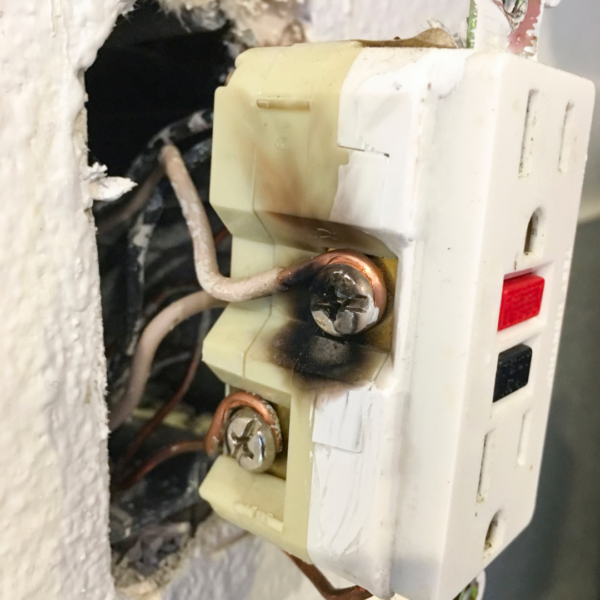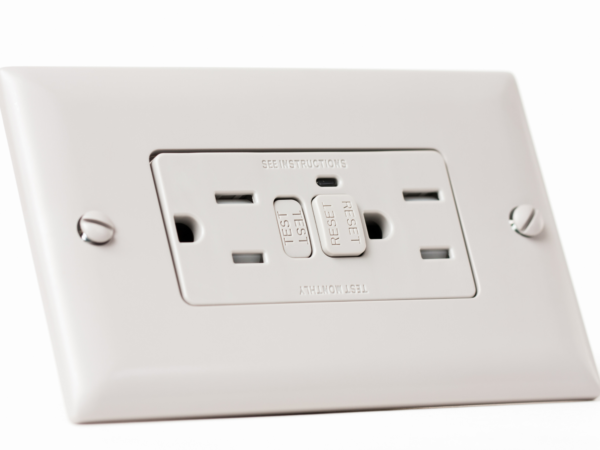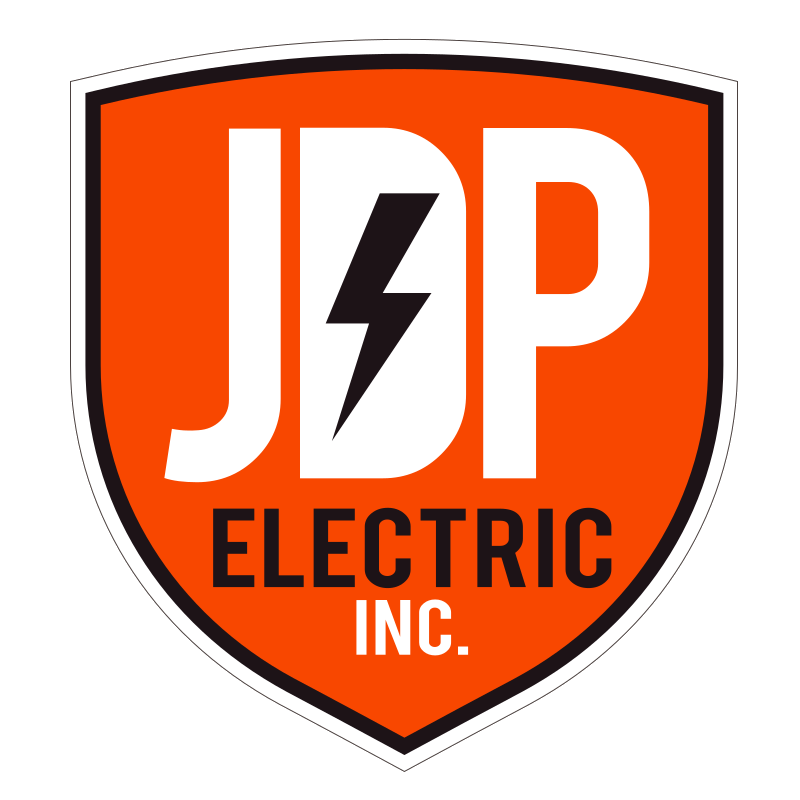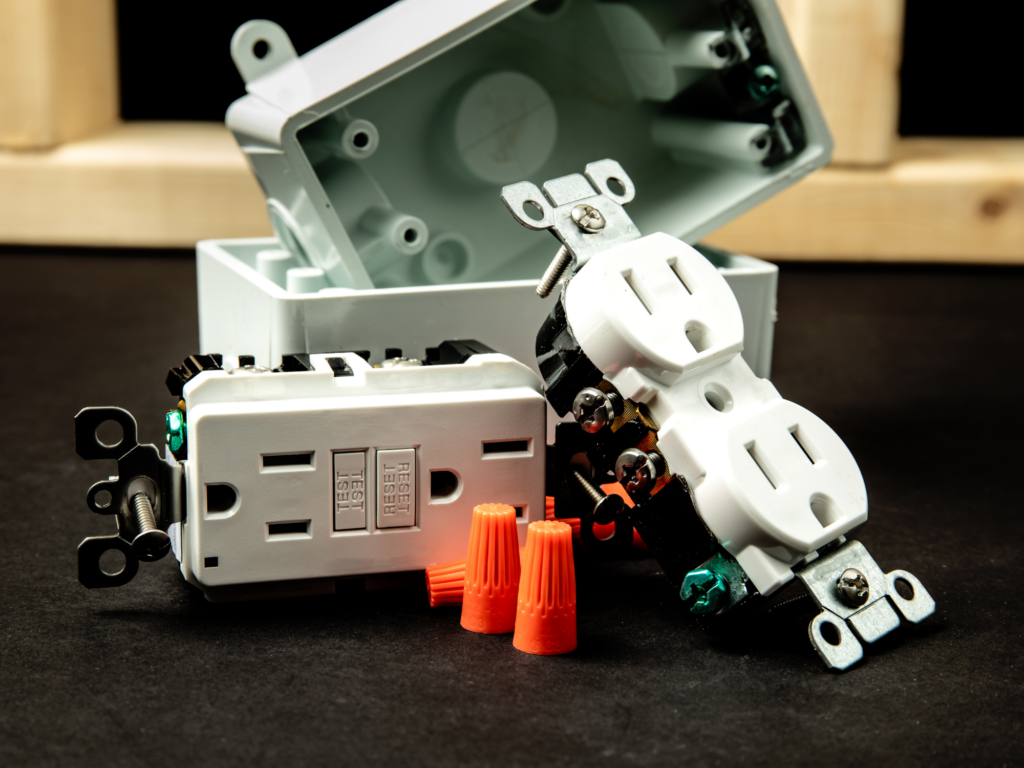Many homeowners know that their bathrooms, kitchens, and laundry rooms have special outlets with two buttons on the face, but they may not know what they are or why they are there. These are ground fault circuit interrupters (GFCIs), a special outlet with a circuit breaker inside. While you may not have known what they do, these electrical safety devices could save your life!
Do I Need A GFCI? Yes!
 In a building, electricity flows from the source (a service panel or breaker box) to outlets around the structure through the hot wire, returning to the source along the neutral wire. A “ground” is a connection to the earth using a grounding electrode, and it gives this flow the most effective way to return to the ground through your electrical panel in the event of a problem.
In a building, electricity flows from the source (a service panel or breaker box) to outlets around the structure through the hot wire, returning to the source along the neutral wire. A “ground” is a connection to the earth using a grounding electrode, and it gives this flow the most effective way to return to the ground through your electrical panel in the event of a problem.
A ground fault happens when the electrical current flows directly to the ground where it shouldn’t, including taking an alternative path through another material. When the power goes where it shouldn’t be, it could threaten the user, the building, and anyone else inside.
GFCI outlets automatically detect the change in flow that indicates when a ground fault occurs, shutting off the power at the outlet. When the flow of electricity suddenly increases, a circuit in the outlet trips and shuts off the power. The Electrical Code requires the detection of ground-fault currents and for electrical equipment to have the right protection from a ground fault by interrupting the fault current.
GFCIs protect you in parts of the home where ground faults are most common, notably in areas with lots of moisture and the likelihood of wet conditions. This is because if water leaks into a breaker box, it could create a ground fault. GFCIs can also protect against shock from faulty appliances, especially those that have uninsulated metal cases or housings that could become dangerous if they short inside.
Where are GFCIs required in the home?
Where Do I Need GFCIs?
 It’s not that you need them because of health and safety – though this should be a good enough reason on its own! Canada adopted ground fault circuit protection as a building code rule more than 40 years ago, and the number of people dying annually from electrocution has reduced over this time.
It’s not that you need them because of health and safety – though this should be a good enough reason on its own! Canada adopted ground fault circuit protection as a building code rule more than 40 years ago, and the number of people dying annually from electrocution has reduced over this time.
During construction, GFCIs must be in certain parts of the home to meet electrical code requirements. Electricians must install them on all receptacles within 1.5 meters of a sink, tub or shower stall. While not required, GFCI outlets should also be found near concrete or metal surfaces that could see water exposure; it’s good to install them in basements, garages, and near swimming pools or hot tubs.
Even if you’re not planning an electrical project, if you have an older home (generally over 20 years old) that lacks GFCIs in bathrooms, kitchens, the laundry room, and outdoors, it’s a good idea to add them.

